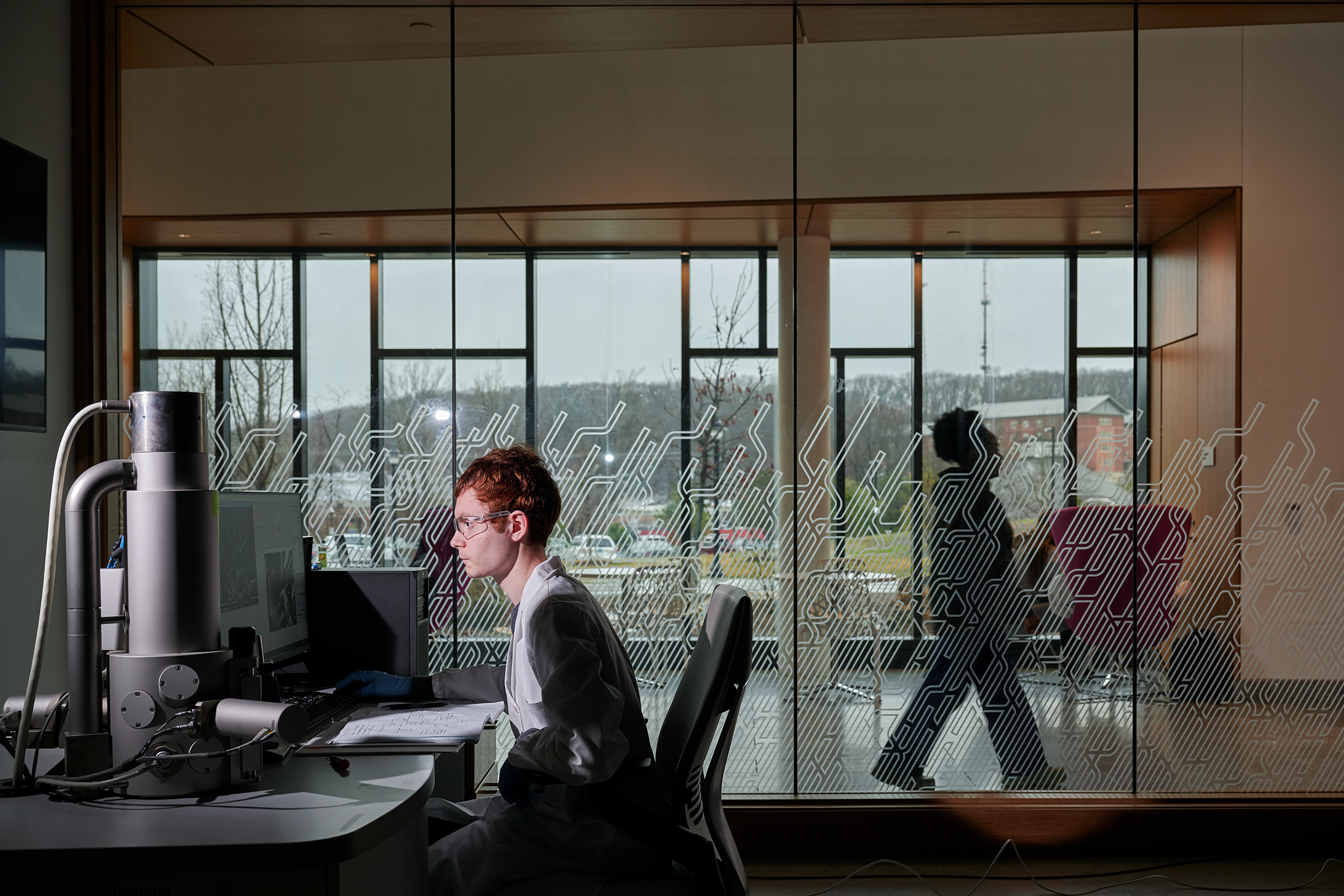3.28.24
Matthew Maramo '24 (ENG) uses a scanning electron microscope at Science 1. It's unusual for undergraduates to get hands-on experience with equipment of this caliber — and especially important for students in disciplines like materials science and engineering. As part of a senior design project, Maramo was documenting pitting and corrosion in stainless steel welding coupons (metal plates) that he and his project partner Kevin Li '24 (ENG) had treated.
3.28.24
Matthew Maramo '24 (ENG) uses a scanning electron microscope at Science 1. It's unusual for undergraduates to get hands-on experience with equipment of this caliber — and especially important for students in disciplines like materials science and engineering. As part of a senior design project, Maramo was documenting pitting and corrosion in stainless steel welding coupons (metal plates) that he and his project partner Kevin Li '24 (ENG) had treated.

As seen on screen: Pitting and corrosion in treated steel coupons via the electron microscope. As characterization instruments go, this one is pretty elaborate — it has an electron gun. Images like this one are obtained by interaction between electrons and the sample surface — as opposed to the simple light bulb source of the optical microscope most of us used in high school and college. Imaging with electrons requires lots of shielding for safety reasons. It also requires the sample be placed in a high vacuum chamber for imaging.
![303 Run 9 possiblepit3 2kx[50] details of pitting and corrosion in steel under an electron microscope](https://magazine.uconn.edu/wp-content/uploads/2024/10/303-Run-9-possiblepit3-2kx50.png)

Leave a Reply